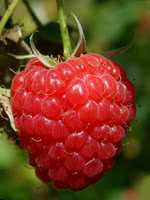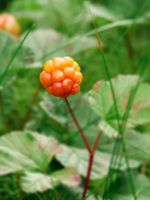Mon-Fri 9am - 5pm Mountain time
Souris Raspberry (an improved Boyne Raspberry) vs Cloudberry
Rubus x Souris
Rubus chamaemorus
NOT AVAILABLE THIS SEASON - MIGHT RETURN
NOT AVAILABLE THIS SEASON - MIGHT RETURN
Souris is an improved version of Boyne, the classic prairie raspberry. It is planted all across Canada and is extremely robust. Where other raspberry cultivars rely on unique selling points and specializations, Souris is just generally a great raspberry.
Souris is cold hardy and resistant to disease and spider mites. Its berries are deliciously sweet and tart while colourful, great for U-pick operations, fresh eating, or using in products such as jams and pies. They can be a bit softer than other raspberry varieties.
The Souris Raspberry is a fast-growing floricane. This means that raspberries will not grow on canes the year they first grow. The mature canes they do grow on, however, produce more berries than primocane varieties.
Cloudberry produces berries which taste tart and tangy with a sweet, floral hint. The berries have a creamy texture when overripe. They are often used to make jams, juices, and liquors. The berries are a pale red colour and when ripe turn more orange/amber. They do not grow very tall, generally reaching only 10-25 cm.
Cloudberry has distinct male and female plants. In order to produce berries, both must be present and pollinate with each other. Berries are produced at maturity, typically 5-7 years, and produce 1 berry per stem. The plant spreads naturally as they grow using modified underground stems (rhizomes), forming more plants over time in the same area.
This plant can be found wild in Canada’s boreal forest. In Newfoundland and Labrador, this plant is known as the Bakeapple and is a significant regional food. Similarly the Côte-Nord region of Quebec also has a long history of using this berry.
Note: Cloudberries require very specific soil conditions. They need well-drained soil with a pH between 3.5 and 5.0. Also sensitive to salt and dry conditions.
Note: Our seedlings are grown from seed and are too young to identify their sex.

